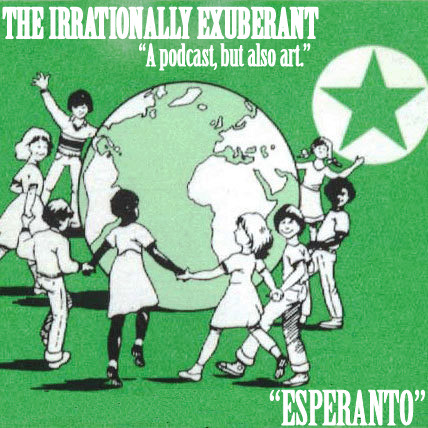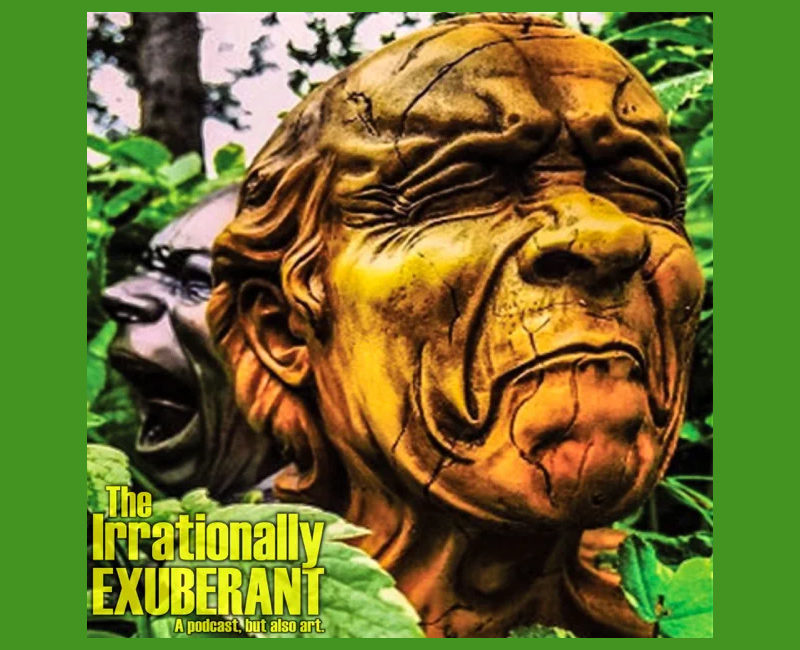
The Irrationally Exuberant | Esperanto
Late 19th century Poland was a place of division and turmoil. The population was incredibly diverse, but not in a happy, elementary school math book illustration way. Yiddish, Russian, German, and Polish were all spoken – mostly used to hurl slurs and insults at opposing ethnicities. At any given moment you could look out of your window to see a craven German strong-arming a miserly Jew, while a drunken Russian looked on in disgust, and a dumb Pole tried in vain to tie his shoes. One groupâs success was perceived to be at the cost of anotherâs. The police force was prejudiced against people they viewed as interlopers. Street signs were growing problematically jumbled. Tensions ran high and violence ran rampant. A breaking point was at hand.
Sound familiar? It shouldnât. That was a very long time ago. Thereâs no way you were around to see it. Unless you are a Crow, Lizard Person, or Dracula, of course. In that case â Welcome to the Podcast! Caw! Hissss! or Blah! to you! Donât forget to check out the web page at theirrationallyexuberant.com for past podcasts, pictures, videos, and the transcript of this episode!
So, enter L.L. Zamenhof, a sensitive young Jewish lad with a penchant for peace and a yearning for learning. He also had, it is said, a yen for Zen, a lust for language, a dictate to abate hate, and a total boner for unity. He was, by all accounts, a great guy, worthy of respect, so shame on you for assuming that I was going to make some inane joke about LLs Cool J or Bean. Dismayed by his surroundings, he came to attribute the fractiousness of his homeland to what he later called âthe heavy sadness of the diversity of languagesâ. He himself spoke Yiddish, Russian, German, French, Hebrew, Polish, Latin, Greek, Aramaic, Lithuanian, Italian, English, and something called Volapuk, which I assumed was old-timey nerd language along the lines of Klingon, but was actually something of a precursor to what we are discussing today.
What are we discussing today? Esperanto. Itâs in the title. Pay attention, Champ. Zamenhofâs solution to the problems he observed was a an easy to learn universal language, with a simple grammar and a vocabulary of root words that would be modified by standardized prefixes and suffixes, free from the irregularities that make a language like English so difficult to master. It was based on a combination of several European languages, as well as Latin, but, to this monolingual English speaker, anyway, sounds a lot like Spanish. He worked on the language for years while attending medical school and then practicing Ophthalmology, and finally introduced it in a book, the Unua Libro, in 1887, under the pseudonym Doktoro Esperanto (meaning Doctor Hopeful). He called the language Lingvo Internacia, but no one liked that, so they called it Esperanto, which has a nice ring to it.
Now, constructed languages â languages created for an express purpose by a specific individual or individuals, as opposed to evolving naturally over time – have an estensive history that begins long before Esperanto and continues through modern times. They are rarely successful, as evidenced by the fact that the aforementioned Klingon is the second most successful of all time, behind Esperanto. The first known instance is the Lingua Ignota, created in the year 1200 by Hildegard of Bingen for âmystical purposesâ. She didnât bother to teach it to anyone else, presumably because she didnât have any friends. In the 16th century, the alchemists and Kabbalists also constructed mystical languages of sorts. Iâm sure they would have gotten on swimmingly with olâ Hilde. Many others came and went after that, typically constructed by idealistic philosophers and would be magicians or wizards or witches or whatever. In 1982, author Suzette Haden Elgin created Ladaan, a feminine-centric language to test the effects of gender normative language. Today, most constructed languages are for artistic purposes. Even as we speak,


